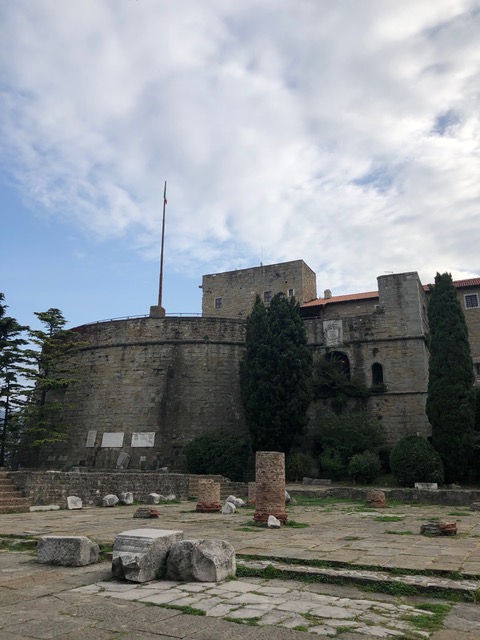No heritage site is ever associated with a single, uniform memory. Different people will interpret the same site in a great variety of ways, based on established narratives that have developed in the community or communities to which they belong. Such narratives often differ in regards to the time-period it regards as being most worthy of interest. Older historical sites tend to accumulate many narratives over time, with each one being more or less important to different communities. The result is a ‘layering’ of memories, with the layers on top being those narratives that are more readily apparent to visitors. The visibility of each narrative can be the result of historical accident or curatorial choice. In some cases, the narratives are highly stratified and therefore distinct; in others, the narrative tends to run together.
In this episode, Iris Volkers and Kelly Hazejager present their case studies, the Miramare Castle and the San Giusto Castle, as prime examples of this phenomenon in Trieste/Trst. They explore the politics and social feeling behind the layering of memories and provide thoughtful criticism of the decisions made by the managers of each site. They also examine the extent to which certain narratives can be said to be in competition and suggest ways in which the sites could be presented in a manner that better represents their multi-layered heritage.
Located at the top of a hill overlooking Trieste/Trst, the site of the San Giusto Castle has been part of this city’s history for many centuries. Construction of the castle was carried out between 1468 and 1636 under mostly Habsburg rule. The castle eventually became the property of the municipality of Trieste in the 1930s, when it was restored and turned into a museum and recreation centre. The castle currently houses the Castle and Arms Museum and the Lapidario Tergestino, a collection of Roman antiquities. Many visitors are attracted by the panoramic views offered by the castle. Kelly Hazejager’s research aimed to uncover how the manner in which the castle is presented has an impact on the framing and perception of the city of Trieste/Trst.

Miramare Castle, situated just outside Trieste, was chosen by Iris Volkers as the object of a critical site analysis, intended to look beyond the prominent Habsburg narrative. The castle is conserved and presented as it would have looked like in the nineteenth century. This means that the visitor is walking through a reconstruction of the former residence of Maximilian of Habsburg and his wife Charlotte of Belgium. The visitor experience is passive and focussed on observing the splendour of the place. Background information on the couple is scarce; Maximilian’s short-lived reign as Emperor of Mexico is almost entirely missing, as is any critique regarding his imperial endeavours. One could easily ignore that the castle has known more residents and users, most of them with their own dubious pasts. These figures are hardly mentioned and very little is said about the role the castle played during Mussolini’s Fascist regime and the subsequent Nazi occupation of the region. Iris has researched the way in which these darker histories are glossed over and yet still very present in the castle.

